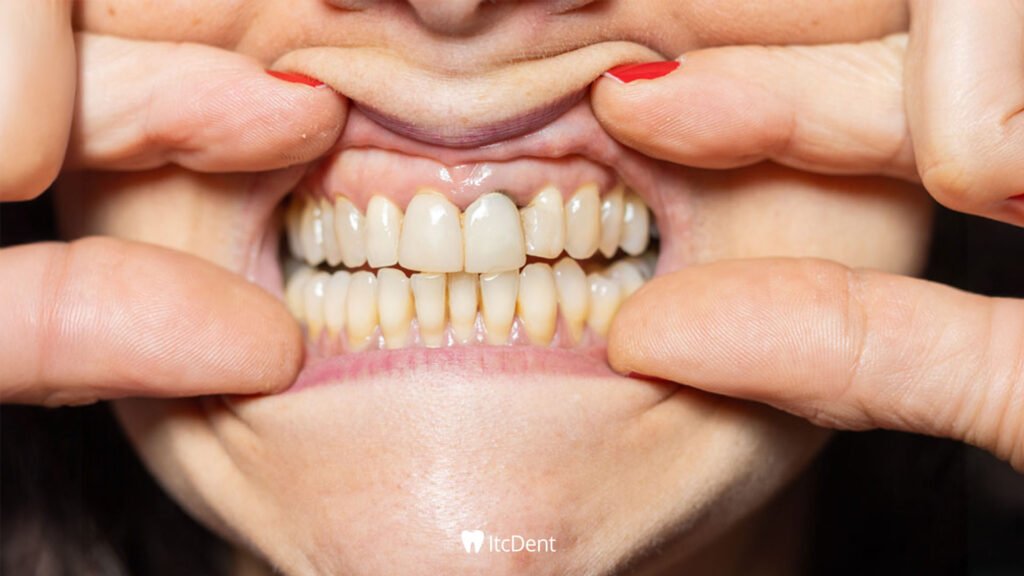Gum Pain
Gum Pain is a common health problem that is often caused by inflammation, infection or lack of dental care in the gums. Dental health is extremely important not only for oral health but also for general health. Because infections in the mouth can lead to different health problems in the body. Gum problems, if not diagnosed and treated early, can lead to more serious tooth loss and systemic diseases. Gum pain is an annoying and disturbing condition that many people encounter in their lives.
So, what are the main causes of gum pain? How can we recognize this pain? The symptoms of gum pain usually manifest themselves with visible signs such as inflammation, swelling, bleeding and bad breath. However, the source of gum pain may not always be limited to a symptom that can be seen from the outside. Therefore, it is of great importance to first make the correct diagnosis for the treatment of gum pain.
Causes of Gum Pain
Gum pain is usually caused by poor oral hygiene or other health problems. Below, we will discuss the most common causes of gum pain in more detail:
- Gingivitis
Gingivitis is a common gum disease that manifests itself with symptoms such as inflammation, redness and swelling of the gums. This condition occurs when plaque deposits between the teeth in the mouth are not cleaned. Plaque is a thin, sticky layer formed by bacteria and food residue. If this plaque is not cleaned regularly, bacteria can damage the gums and cause inflammation. The most common symptoms of gingivitis include swelling, redness and bleeding during brushing of the gums. However, bad breath is also a common symptom. If gingivitis is not treated in the early stages, the infection can deepen and turn into a more serious condition called periodontitis.
- Periodontitis
If gingivitis is left untreated and neglected, it can cause the gums and connective tissue around the teeth to become infected more deeply. This can lead to the development of a more serious gum disease called periodontitis. Periodontitis is a disease in which inflammation in the gums progresses and affects the ligaments, roots of the teeth and the jawbone. When this stage is reached, the gums become more swollen, red and usually painful.
One of the most obvious symptoms of periodontitis is bleeding and swelling from the gums. Bad breath is also a common complaint. Patients may experience bleeding while brushing their teeth or flossing. Loose teeth is another important symptom that occurs in the advanced stages of periodontitis. This is due to the weakening of the connective tissue and bone in the gums and the loss of strength of the teeth.
If left untreated, periodontitis can lead to serious problems such as tooth loss. Inflammation of the gums becomes deeper and can affect the jawbone, which can lead to complete loss of teeth. In addition, this disease can negatively affect other organs in the body and can be associated with chronic diseases such as heart disease and diabetes.

- Tartar
Tartar is formed when plaque on the teeth hardens and mineralizes. Tartar can cause inflammation of the gums and cause pain. Tartar cleaning should be done by a dentist.
- Clenching or Grinding Your Teeth (Bruxism)
Consciously clenching or grinding your teeth can cause pain in the gums. This habit is usually caused by stress or anxiety and strains the gums.
- Dentist Interventions
Some interventions performed during dental treatments can also cause pain in the gums. Temporary gum pain may occur after procedures such as dental fillings, root canal treatment or tooth extraction.
Symptoms of Gum Pain
There are a variety of symptoms of gum pain. These can include:
- Swollen and red gums
- Bleeding gums, especially when brushing or flossing
- Sensitivity in teeth, especially when consuming hot or cold foods
- Bad breath
- Pain or discomfort in the gums
- Loose or shifting teeth (in the case of periodontitis)
- Bleeding or white lesions on the gums
These symptoms may indicate different stages of gum pain. If not treated early, the condition can become more serious.

How to Treat Gum Pain?
Treatment for gum pain varies depending on the cause of the pain. Here are some methods to treat gum pain:
-Gum Cleaning and Tartar Cleaning
The most common cause of gum disease is plaque and tartar. You can prevent this buildup by brushing your teeth regularly and flossing. However, you need to see a professional dentist to remove tartar. Tartar can only be removed by a dentist.
-Antibacterial Mouthwashes
Antibacterial mouthwashes can help reduce inflammation in the gums. These mouthwashes can relieve pain by killing bacteria in the gums.
–Painkillers
Painkillers can be used to temporarily relieve gum pain, with the advice of a doctor. Nonsteroidal anti-inflammatory drugs (NSAIDs) can relieve pain by reducing inflammation.
–Dentist Treatment
In advanced stages of gum disease, your dentist may recommend more extensive treatment methods. Periodontitis treatment may involve cutting the gums, cleaning infected areas, or requiring surgical intervention.

-Medications for Gum Inflammation
Antibiotics or topical medications can be used to treat gum inflammation. These medications can kill bacteria and control inflammation in the gums.
-Treatment for Receding Gum
Gum recession can be treated by bringing the gums back or strengthening them. This treatment is usually done by a dentist.
-Natural Methods
Sometimes, some natural treatments that can be done at home can also relieve gum pain. Methods such as gargling with salt water, drinking chamomile tea, or applying aloe vera gel directly to the gums can relieve pain.


